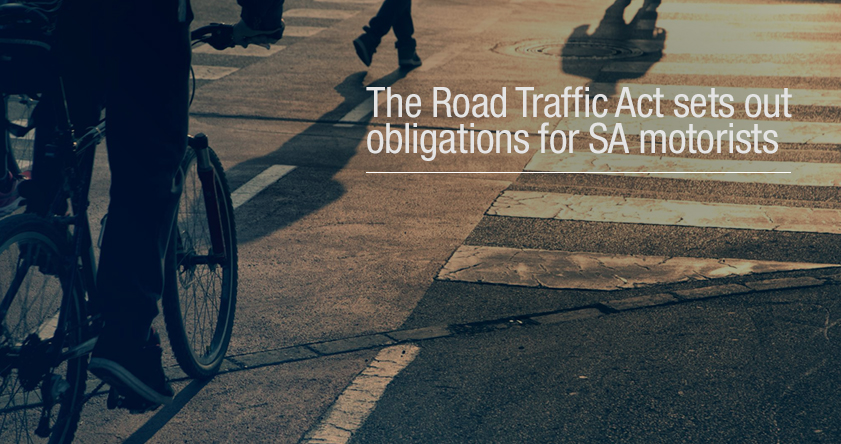
The National Road Traffic Act sets out certain obligations for motorists sharing the roads with pedestrians and cyclists. Motorists should always be vigilant, and keep a lookout for pedestrians and cyclists who are among South Africa’s most vulnerable road users. Our roads belong to all users and are not just for the exclusive use of those behind the wheel of a car.
One of the obligations of motorists is that they are forbidden from parking on the sidewalk of a public road, a traffic island, or in a pedestrian mall or pedestrian lane. A sidewalk is defined as a portion of a verge intended for the exclusive use of pedestrians. The only time motorists can legally park on a pavement is when there is a road traffic sign allowing them to do so.
If someone contravenes this law, their vehicle may be removed and impounded by a traffic officer, and the owner will carry the costs. Motorists are also not allowed to park within nine metres of the side from which he or she approaches a pedestrian crossing demarcated by appropriate road traffic signs, unless such parking is permitted by appropriate road traffic signs.
When it comes to pedestrian crossings, the driver must yield the right of way, slowing down or stopping if need be, when approaching. to accommodate for pedestrians crossing the road. Whenever any vehicle is stopped at a pedestrian crossing to permit pedestrians to cross the roadway, the driver of any other vehicle approaching from the rear must not pass the stopped vehicle.
If a driver does knock a pedestrian or cyclist, the normal duties of a driver in event of accident as provided by Section 61 of the Act apply:
- The driver must immediately stop the vehicle and report the accident.
- The driver must check if anyone has sustained an injury, as well as the seriousness of the injury, and render assistance to the injured person if he/she is capable of doing so.
- The driver must provide his/her details to anyone having reasonable grounds for requesting his/her details.
- If the driver has not already reported the accident to a police or traffic officer at the scene of the accident, he/she must report the accident as soon as reasonably practicable, unless he/ she is incapable of doing so due to injuries sustained in the accident. Where a person is killed or injured it must be reported within 24-hours after the occurrence of the accident or in any other case on the first working day after the occurrence of such accident
- The driver must not, except on the instructions of a medical practitioner, take any intoxicating liquor or drug having a narcotic effect.
- A vehicle involved in an accident where another person has been killed or injured shall not be removed from the position in which it came to rest until the removal has been authorised by a traffic officer. The only time a vehicle may be moved without authority is when the accident causes complete obstruction of the roadway of a public road, only then can it be moved sufficiently to allow the passage of traffic. And, this is only after its position has been clearly marked on the surface of the roadway by the person moving it.
- Except for the purpose of sufficiently allowing the passage of traffic, no other person may remove a vehicle which has been involved in an accident without the permission of the lawful owner, driver or operator
In any prosecution for a contravention of any provision of Section 61 it shall be presumed, in the absence of evidence to the contrary, that the accused was aware of the fact the accident occurred, and that he or she did not report the accident or furnish information as required.
In the event that a motorist knocks down a pedestrian or a cyclist, and the State decides to pursue a criminal case against him/her, the State will have to prove beyond a reasonable doubt that the driver is in fact guilty in terms of criminal law. This, off course, entirely depends on evidence which is gathered during the investigation which will, for example, look into the speed, and manner, in which the car was driven.
Motorists may also face harsh consequences if the State proves they are guilty of reckless, or negligent driving, or inconsiderate driving.
It goes without saying, but the consequences of driving while drunk, or under the influence of drugs, also carries harsh penalties, especially if someone has been hurt, or worse, killed. These consequences may include imprisonment for culpable homicide where the death of a pedestrian or cyclist is the result of serious negligence or recklessness.

